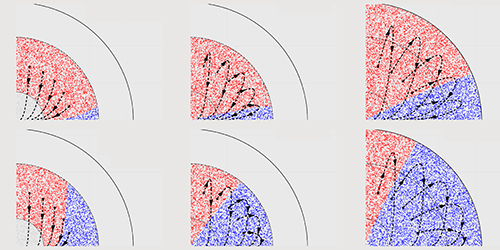One Field to Rule Them All
Cosmic inflation—a theorized exponential expansion of space in the early Universe—offers solutions to important cosmological puzzles. It explains why the Universe appears perfectly flat: the expansion stretches any curvature to the point of imperceptibility. It also explains how quantum vacuum fluctuations could become seeds for the structure of the Universe. Most models of physics beyond the standard model entail many new quantum fields, which suggests that inflation could have been driven by multiple fields. However, observations of the cosmic microwave background radiation favor there being only one such “inflaton” field. So are multifield models incompatible with observations?
Now Koki Tokeshi of the University of Tokyo and Vincent Vennin of Sorbonne University, France, propose an explanation for the appearance of a single field dominating inflation [1]. The researchers consider a model of inflation involving two inflaton fields whose quantum fluctuations make their dynamics stochastic. In any microscopic patch of space, the fields evolve stochastically until inflation ends. Using a previously developed test [2], the duo calculates that, in that patch, this evolution can lead the lighter field (the one associated with a smaller “mass parameter”) to dominate over the other. Inflation in that patch could thus be well approximated by a theory with a single field.
But how common are patches of the Universe amenable to such evolution? Tokeshi and Vennin show that patches with suitable initial conditions correspond to spacetime regions that go through more inflation and thus end up having larger volumes. As a result, inflation with two fields may look like single-field inflation because these regions end up making up most of the volume of the Universe. The researchers say they expect similar results to hold for the case of more than two fields.
–Robert Garisto
Robert Garisto is the Chief Editor of Physical Review Letters.
References
- K. Tokeshi and V. Vennin, “Why does inflation look single field to us?” Phys. Rev. Lett. 132, 251001 (2024).
- C. M. Peterson and M. Tegmark, “Testing two-field inflation,” Phys. Rev. D 83, 023522 (2011).




